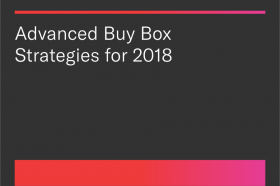Resources - Blog
Understanding the New LTSF for Effective Inventory Management

Stay on top of the latest e-commerce and marketplace trends.
Why do sellers need a comprehensive handle on any potential long-term storage fees? The answer is that drastic long-term storage fees can have a negative impact on your profit margins. With September marking the beginning of Amazon’s new LTSF policy, where fees are being evaluated and charged on a monthly basis instead of biannually, it is critical for FBA sellers to regularly monitor their inventory that is stored at Amazon fulfillment centers.
Although the long-term storage fee itself is now significantly lower than it was historically, moving from $11.25 to $3.45 per cubic foot for 181-365 days and from $22.50 to $6.90 per cubic foot for longer than 365 days, assessing these fees will be much more costly for sellers now that they are being examined on the 15th of each month. In addition to adjusting the policy schedule for LTSF payment, regular monthly inventory storage fees were increased by $0.05 per cubic foot for both standard and oversized items.
Amazon also implemented minimum long-term storage fees, where a minimum charge of $0.50 per unit per month will be charged on items in fulfillment centers for 365 days or longer. For example, a single book stored in Amazon’s fulfillment center for over a year would normally be charged $0.10, but now the updated minimum fee increases this to $0.50. The greater of the applicable total long-term storage fee or minimum long-term storage fee will be charged.
Navigating the Inventory Performance Index
Amazon established a new score metric, Inventory Performance Index, which is utilized to measure sellers’ adeptness with inventory management performance. The metric is based on excess inventory, sell-through, stranded inventory, and in-stock inventory. Although it was first introduced in 2017, it is now used to limit storage access for sellers who have an index below 350. Sellers who maintain an index score of 350 or greater will have unlimited storage access for standard and oversize items (monthly storage fees and long-term storage fees will still apply).
If you don’t maintain a performance index above 350, you will be notified by Amazon of potential storage limits — which are now analyzed every three months on a quarterly cycle. If your score doesn’t move above 350 at the end of the quarter, the limits will still apply for the next quarter. You will not be able to create a new shipment to Amazon until your inventory level drops below your limits.
If your existing inventory exceeds your storage limits that month, you will also need to pay an Inventory Storage Overage Fee on the inventory that goes above the limit, as well as applicable monthly and long-term storage fees. The overage fee will be charged monthly at $10.00 per cubic foot, based on the daily average volume of inventory that exceeded the limits over the course of the month. Maintaining 30 to 90 days of coverage should keep you in good standings for a strong IPI.
LTSF-Free New Products
Between August 21 and November 30, 2018, qualifying newly launched items may be eligible for long-term storage fee reimbursement for up to six months. As sellers or private labels, this represents a great opportunity to test new SKUs in the marketplace. Multi-packs and bundles of pre-existing ASINs do not qualify for the promotion. Products need to be received by Amazon’s fulfillment centers by December at the latest to take advantage of the LTSF promotion.
The Importance of Inventory Management
To strategically prepare for the Q4 holiday season, you should invest time planning out the entire quarter and establish a cadence to regularly monitor inventory levels. Use inventory performance data from Q4 of the previous year and Q3 of the current year as a reference point. Take units ordered, profit margin, Buy Box share, returns, and sales rank into consideration to deduce how many units of each SKU you should plan on ordering, based on both current demand and seasonality trends.
Knowing how to balance inventory levels to make sure you don’t stock out or end up with excess inventory is a constant challenge. Not only can your sales be impacted, but your inbound expenses too. While low stock levels can be directly correlated to a sales decline, having too much product can equate to hidden expenses — storage fees, obsolescence, loan interest, and not investing in new products. The time period where you are ramping up for Q4 and the weeks that follow is critical for analyzing your inventory position in order to effectively capitalize on holiday demand.
Learn what Feedvisor can do for your business.
When you partner with Feedvisor, you automatically receive access to our true, AI-driven technology and hands-on team of e-commerce experts. Contact one of our team members today to learn more about our end-to-end solution for brands and large sellers on Amazon, Walmart, and e-marketplaces.


![5 Avoidable Mistakes Hurting Your Gross Profit Margin on Amazon [Guide]](https://feedvisor.com/wp-content/uploads/2018/08/blog-5-avoidable-mistakes-hurting-your-gross-profit-margin-on-amazon-280x186.jpg)
